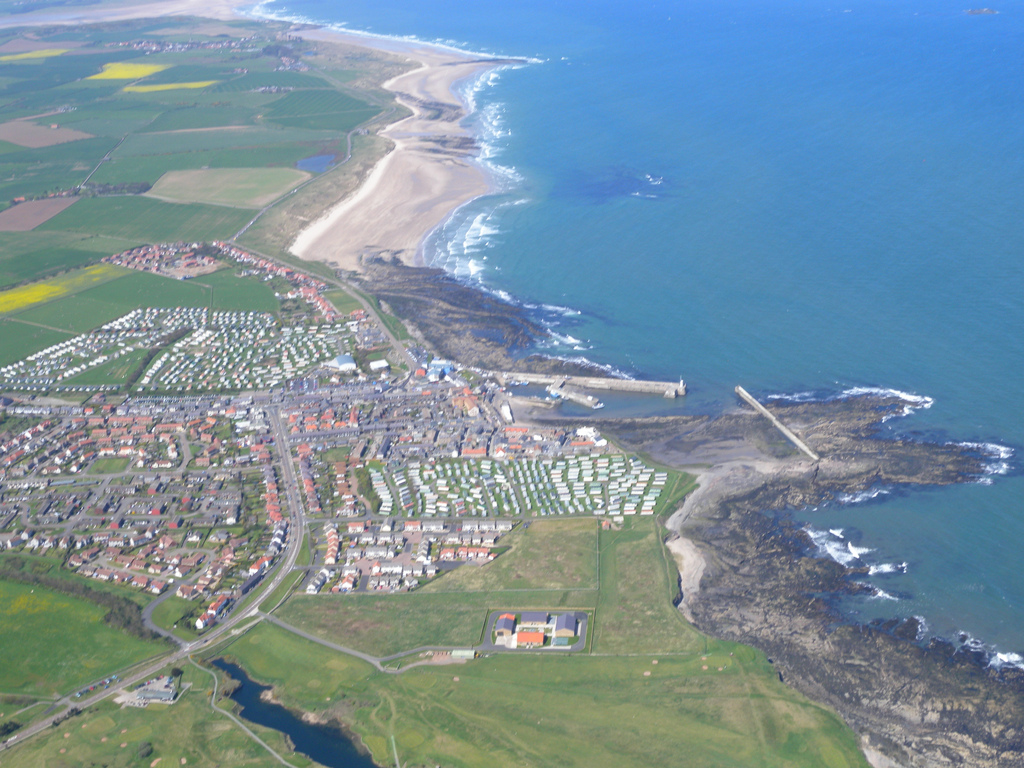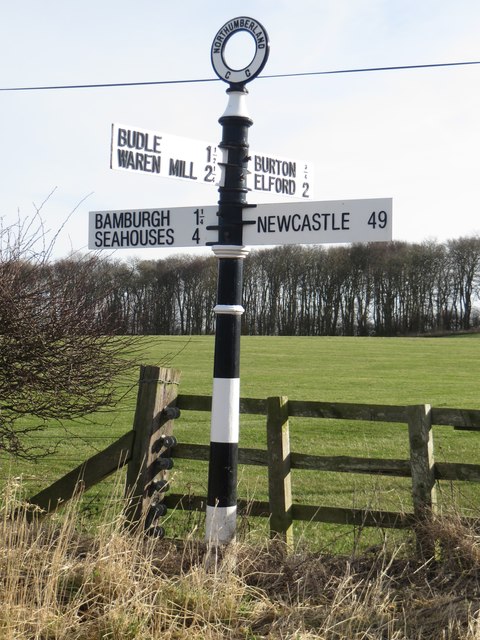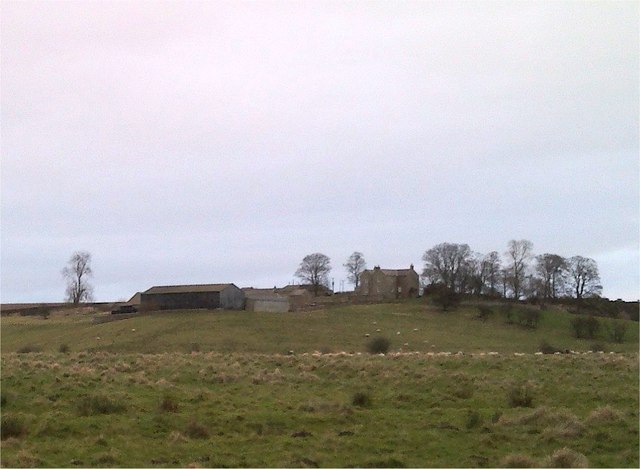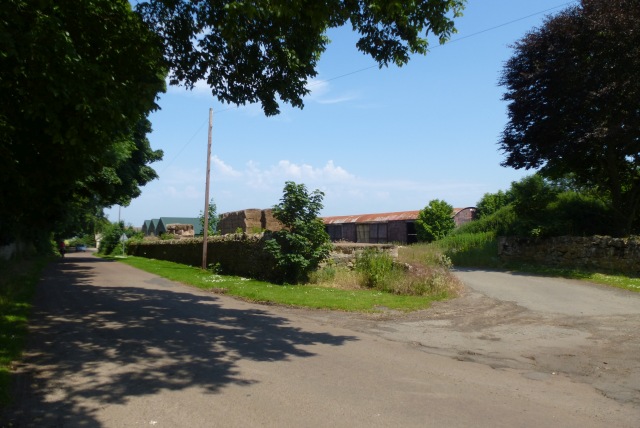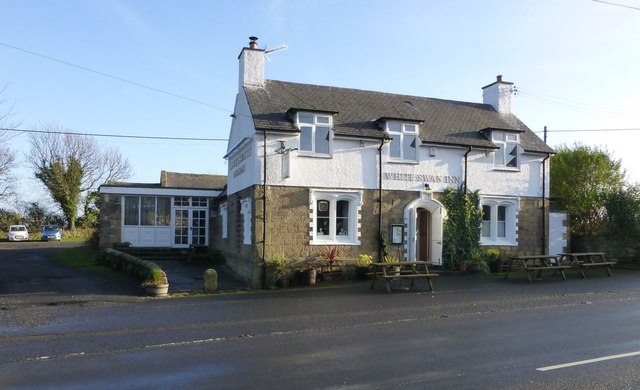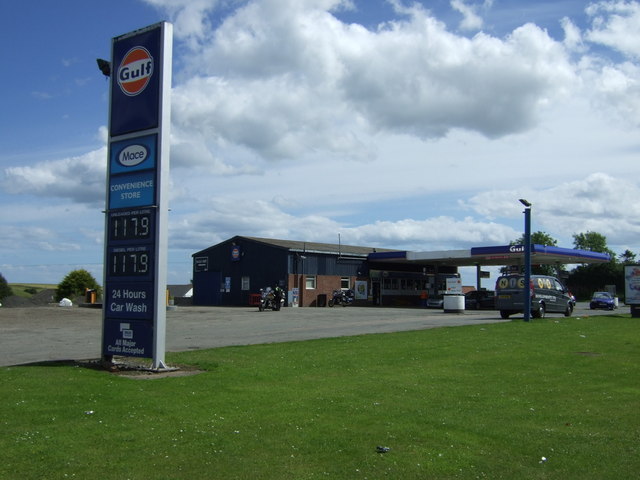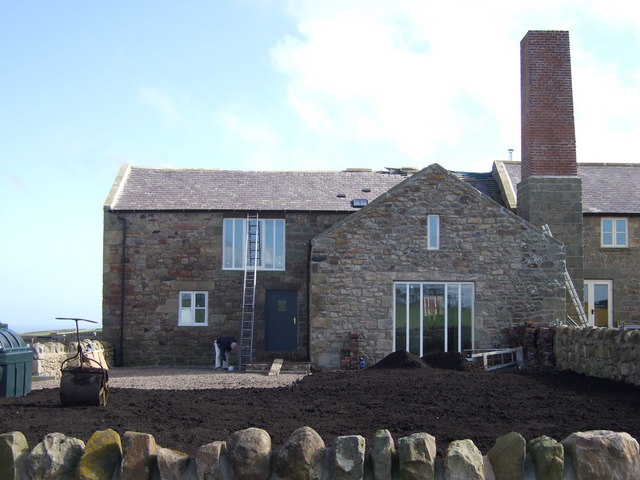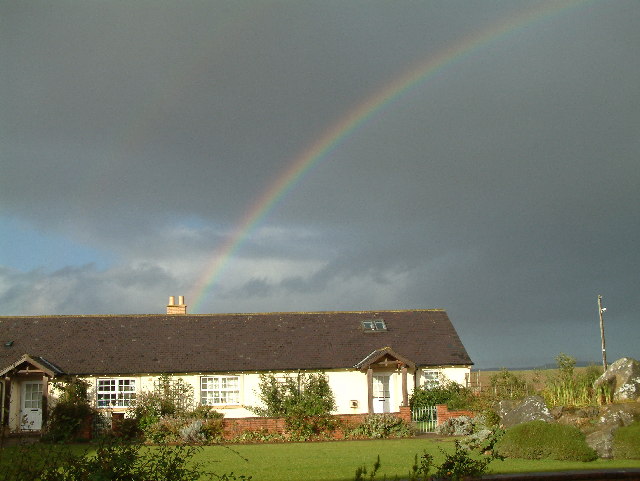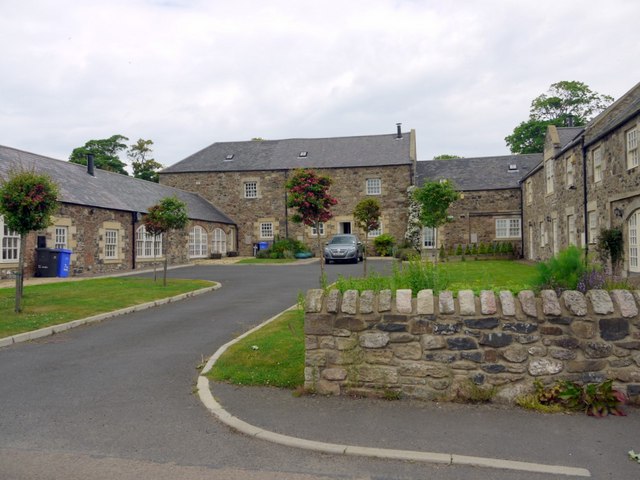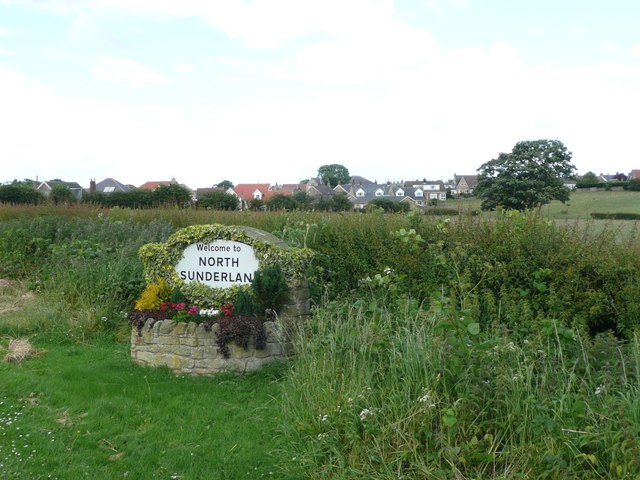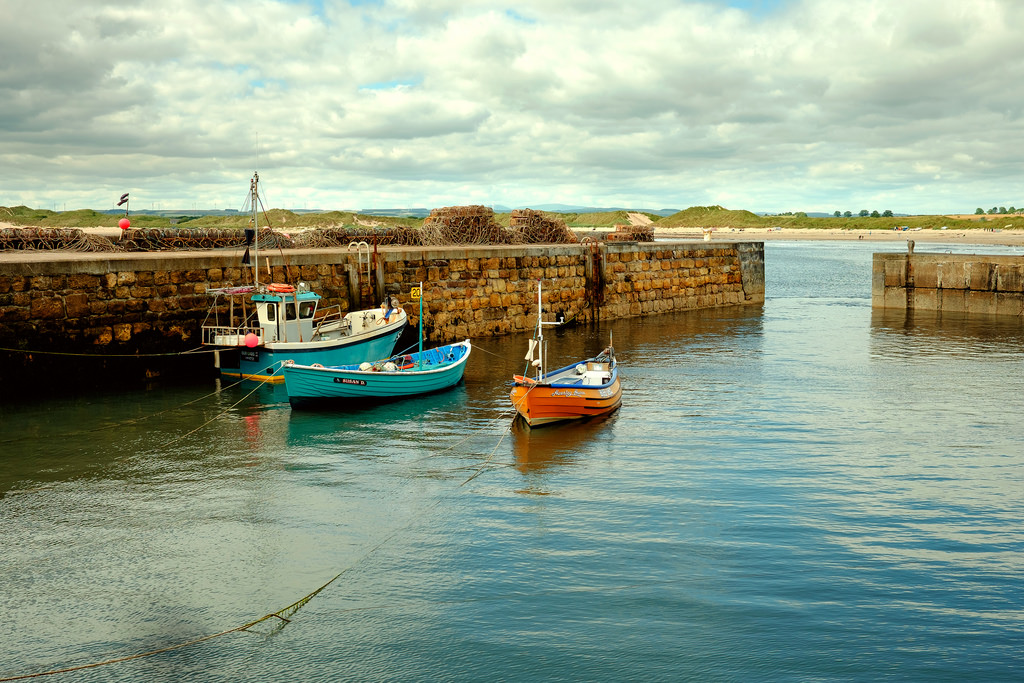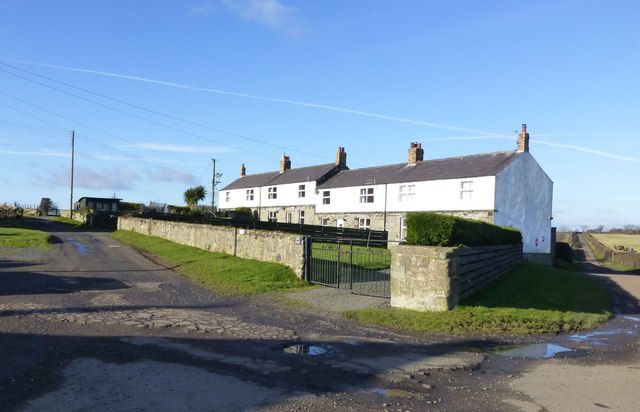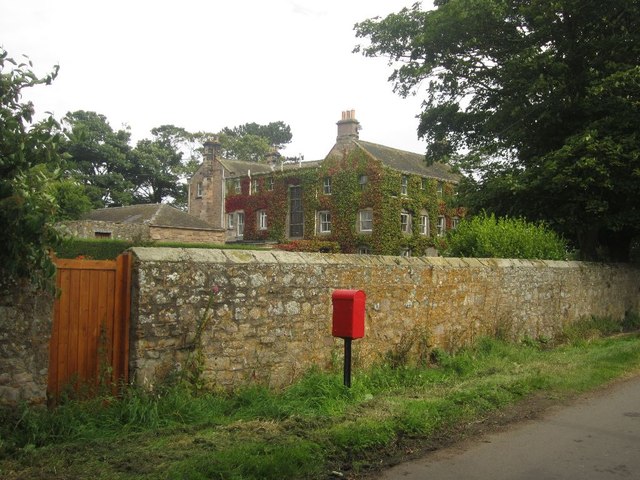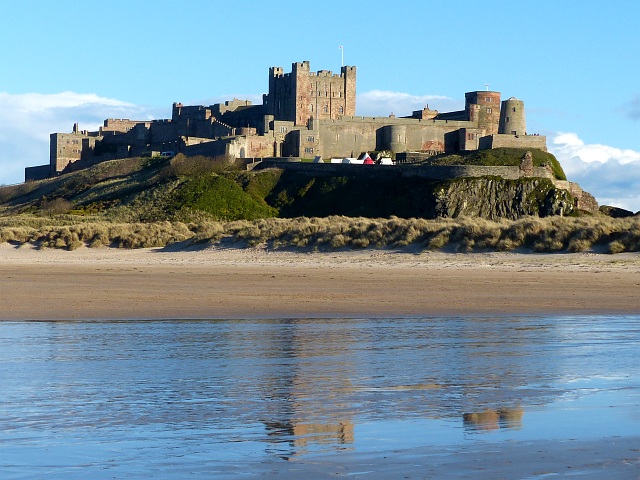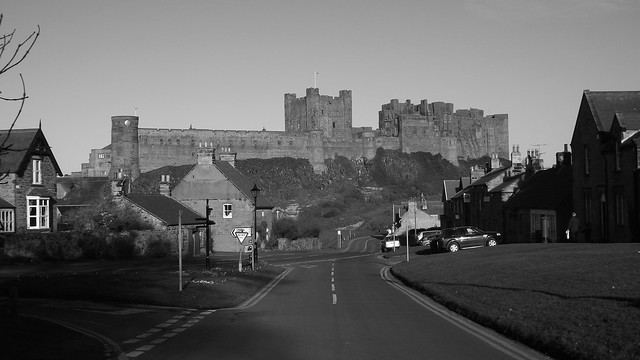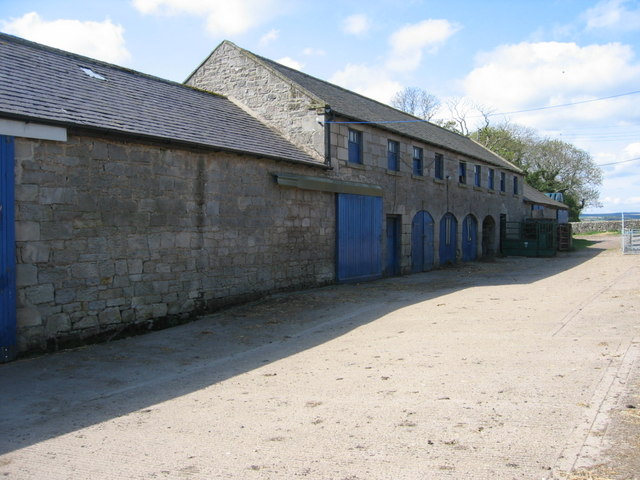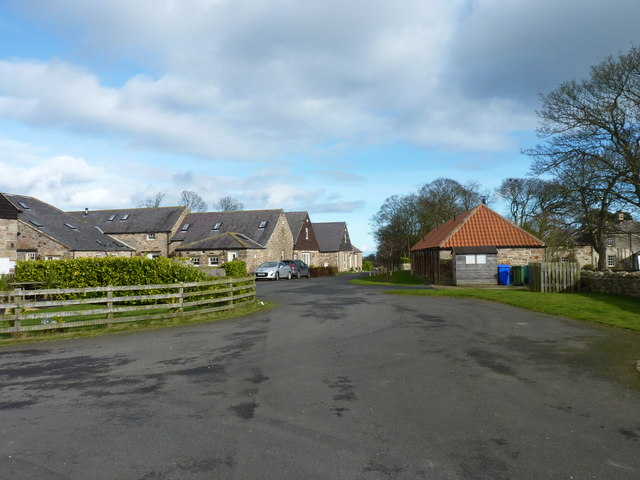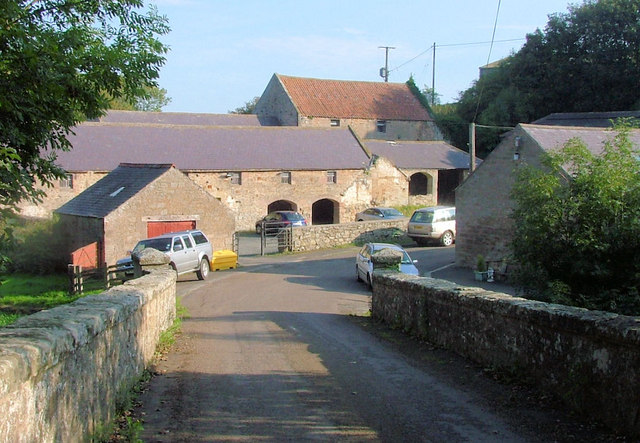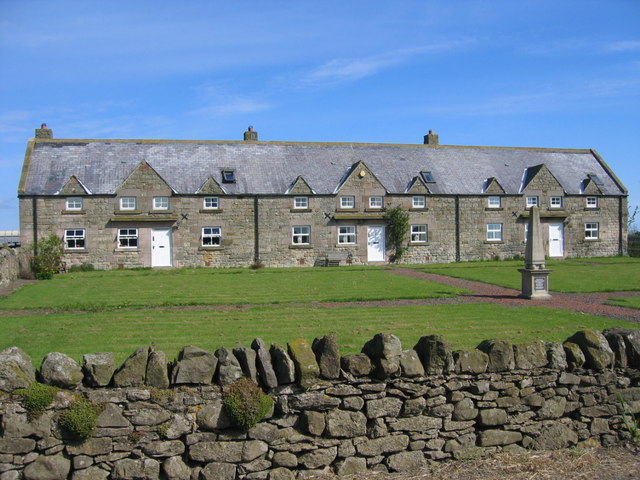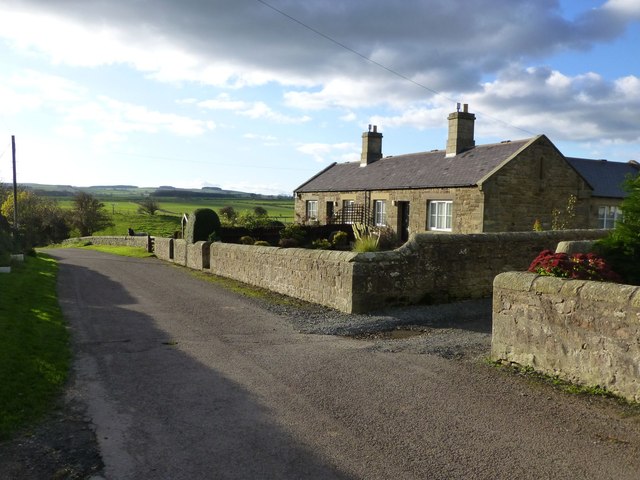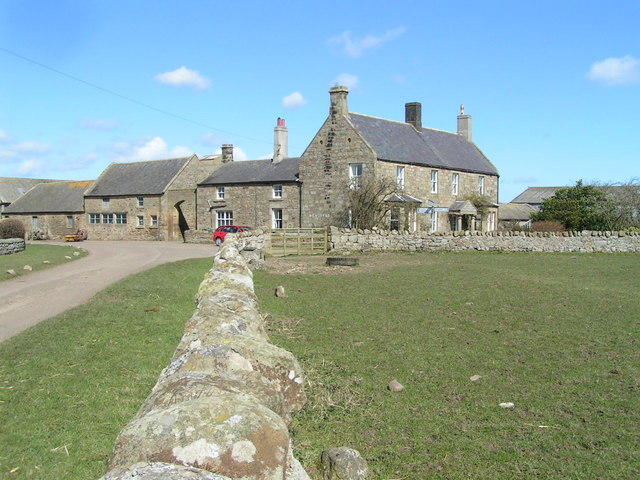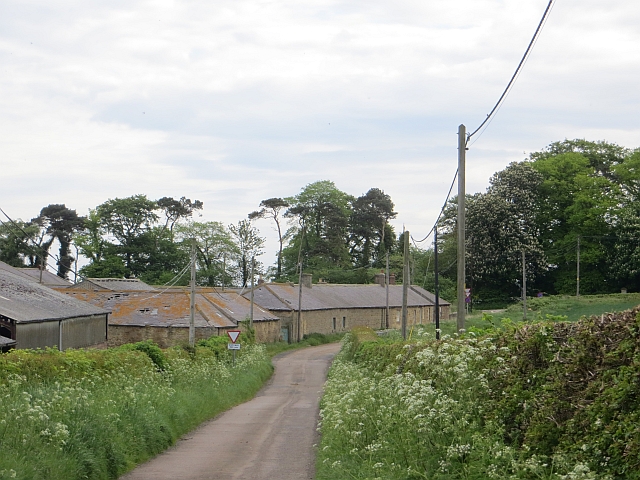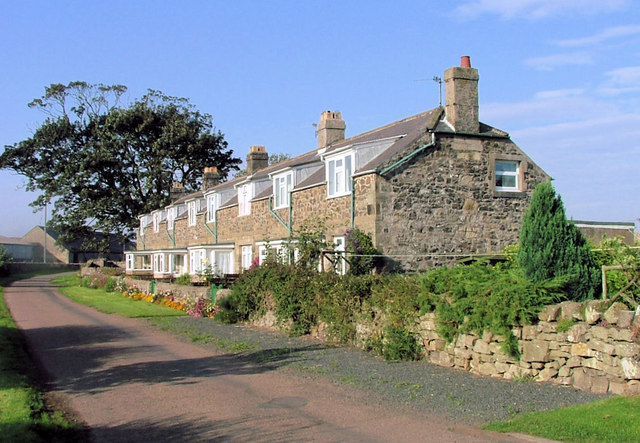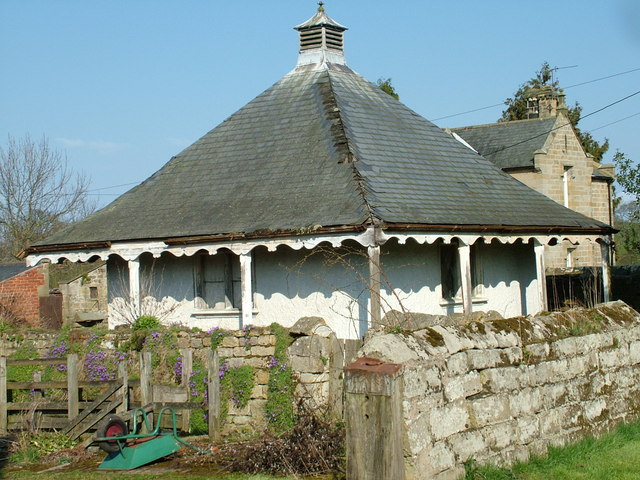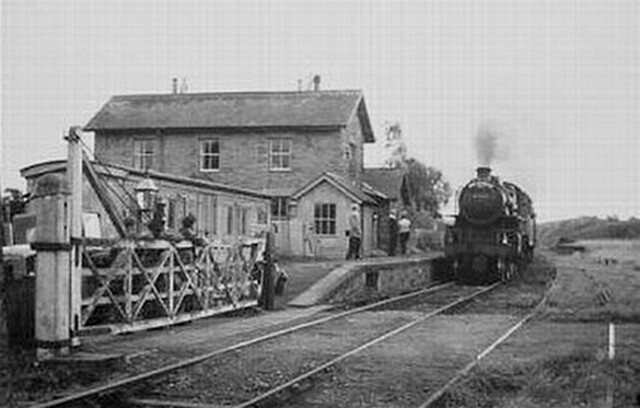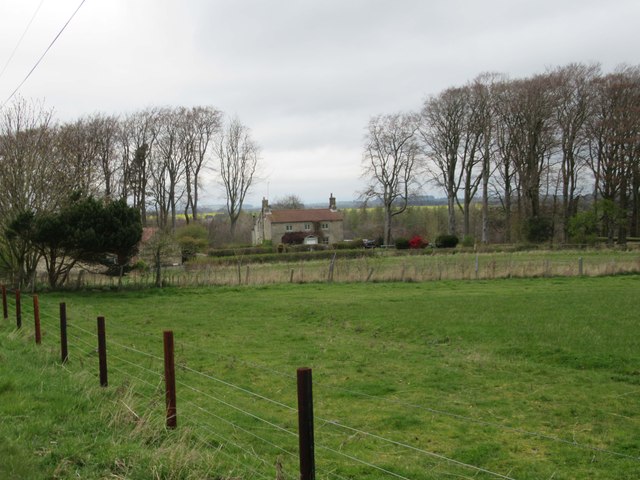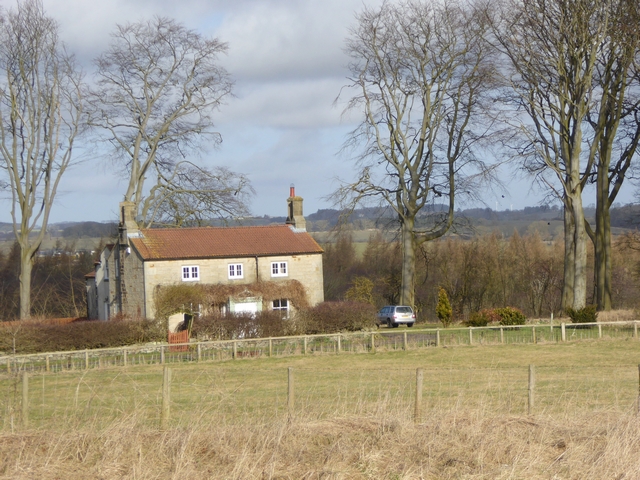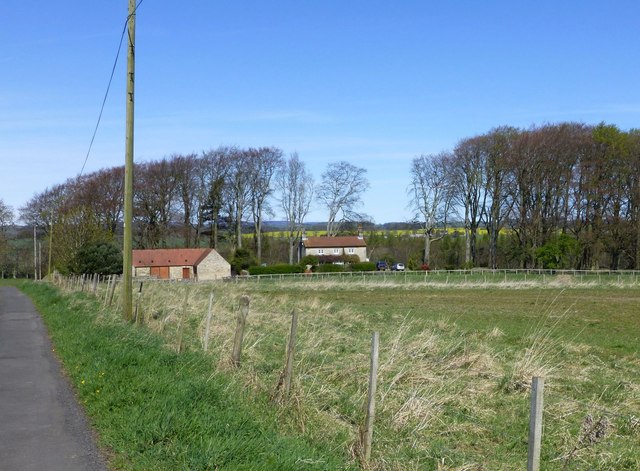Topics > Northumberland > Civil Parishes in Northumberland > Bamburgh Civil Parish > Bamburgh Parish, 1855
Bamburgh Parish, 1855
Extract from: History, Topography, and Directory of Northumberland...Whellan, William, & Co, 1855.
BAMBROUGH PARISH
BAMBROUGH is a parish, comprising two chapelries [Beadnell and Lucker] and twenty-two townships [Adderstone, Bambrough, Bambrough Castle, Bradford, Budle, Burton, Elford, Fleetham, Glororum, Hoppen, Mousen, Newham, Newstead, North Sunderland, Outchester, Ratchwood, Shoreston, Spindlestone, Swinhoe, Tughall, Warrenford and Warrenton], and is about eight miles long by six broad. It occupies the whole breadth of the ward from Budle Bay and Belford, to Beadnel and Ellingham, and comprises an area of 26,234 acres. Its population in 1801, was 2,935; in 1811, 3,114; in 1821, 3,342; in 1831, 3,949; in 1841, 4,237; in 1851, 4,545 souls.
ADDERSTONE, a township in Bambrough parish, is situated three miles S.S.E. from Belford. It contains 2,603 acres, the property of the Duke of Northumberland, John Church, Esq., John Pratt, Esq., Thomas A. Graham, Esq., and others; and its annual value is £3,714. 10s. Population in 1801, 300; in 1810, 327; in 1821, 342; in 1831, 322; in 1841, 302, and in 1851, 299 souls. The manor of Adderstone was anciently the property of the Forsters, who had a seat here, but in 1763 it was transferred to John Wm. Bacon, Esq., by whom Adderstone Hall was erected, and subsequently came into the possession of John Pratt, Esq., of Bell's Hill, in this township. ADDERSTONE HALL is at present unoccupied. TWIZELL HOUSE, the seat of P. Selby, Esq., J.P., is a fine mansion, and not more remarkable for it’s exterior appearance and situation, than for the beautiful museum which it contains. This township is intersected by the York, Newcastle, and Berwick Railway.
DIRECTORY. P. Selby, Esq., J.P., Twizell House, William Anderson farmer and joiner; and William Aitcheson, Wliliam Dinning, William Keen and Thomas Tate, farmers.
BAMBROUGH, a township and village in the parish or the same name contains 1,242 acres of land, of which the annual value is £2,126. The principal proprietors are the trustees of the late Lord Crewe. Its population in 1801, was 295; in 1811, 298; in 1821, 342; in 1831, 417; in 1841, 375; and in 1851, 416 souls. This township includes a place called Fowberry.
THE VILLAGE of Bambrough occupies a fine healthy situation, about four and three quarter miles east by north of Belford. lt was once a royal burgh and sent two members to parliament, but even the market has long been disused. A monastery for regular canons of the order of St. Augustine was founded here, in the year 1137, by King Henry I. This monastery was a filiation of the priory of Nostell, near Pontefract, in the West Riding of Yorkshire, and was valued in 1534 at £116. 12s. 5d. After the Dissolution it was granted to John Forster. Here was also a college, a hospital, dedicated to St. Mary Magdalen, and a house of Dominicans. THE PARISH CHURCH, dedicated to St. Aidan, is a plain neat structure, and from it’s appearance there is every reason to suppose it has been built at different periods. Mention is made of a church here as early as the year 651. The parish register commences in 1638. The living is a perpetual curacy in the archdeaconry of Lindisfarne, and deanery of Bambrough, rated in the parliamentary returns at £109 18s. 9d.; gross inc9me, £121. The church estate of this parish is £100 per annum. Patrons, the trustees of the late Lord Crewe; incumbent, the Rev. William Darnell, M.A.
CHARITY. BAMBROUGH CHURCH ESTATE. There is an estate at Fowberry, an extra parochial district, situated within the parish of Bambrough, the rents of which have, for a long series of years, been applied to the purposes of a church-rate. There are no deeds or documents in the parish, showing how the parishioners became possessed of this property. The estate consists of a farm house and outbuildings, with about sixty-three acres of land, producing an annual rent of £100. The estate is let by the minister and four and twenty parishioners, and the rents are received by the minister and churchwardens, and applied to all the purposes of a church-rate, as well as the expense of repairing and ornamenting the church; no part of the rent being applied to the repairs of the chancel, or of the north or south cross aisles, which are private property.
BAMBROUGH CASTLE is a township in the above parish, situated about five miles east of Belford. The name is derived from its vicinity to the celebrated castle of Bambrough, which stands 150 feet above high water mark, on a high and rugged triangular rock of basalt, projecting into the sea, and accessible only from the south-east side. Lambard tells us that "it taketh its name from Quene Bebba who builded it, as sayethe Beda. Which reporteth further, that the handes of Kinge Oswald weare kept in a churche theare, which in reward of his pity toward the poore, to whom he opened the same most liberaly, weare for ever preserved unwythered, accordinge as Aidan the bishop had before told hym. But Henry Huntington saythe, that lda the first kinge of Northumbedand built it, enclosed it first with a hedge and then with a wall, about the yeare 554. Eadfride, nephew and successor to Ceolwulph, which lyved in Beda his time, imprisoned within this castle Cyne-wulfe, the Bishop of Lindisfarne, because he suffered Offa, a nobleman, to be plucked from his churche and to be slayne. It was much defaced by Anlaf and Sueny the Danes, under King Aedelred in 991. In the time of William Rufus, Earle Robert of Northumberland, fled to this castle, William followed and besieged it so straitly, that he constreyned him to flight, wherein he toke him, and because he found the castle impreignable, he built a castle of wood over against it, which be called then a malvesine, malus vicinus, and in the end caused the defendantes to render it, 1094. Howsoever the Scot came to it, I find in Mat. Paris, that by composition betwene King Henry II., and hym, he delyvered Henry this towne amongst others, and Henry delyvered to him the earldome of Huntingdon 1157, Edward II, to satisfye his nobles, committed Peter Gaveston to this castle, bnt they ceased not tyll they had slayne hym." During the wars between Stephen and the Empress Matilda, and between the rival houses of York and Lancaster, it was often taken and retaken, and in the reign of Henry VII, it had become considerably dilapidated. In the reign of James I., the castle and manor were granted to John Forster, Esq. The following subsequent account of it is quoted from Pennant :- “This castle and the manor belonging to it, were once the property of the Forsters, but on the forfeiture of Thomas Forster, Esq., in 1715, for having joined the Pretender, it was purchased by his uncle, Lord Crewe, Bishop of Durham, and with other considerable estates, left vested in trustees, to be applied to unconfined charitable uses. Three of these trustees are a majority; one of them makes the place his residence, and blesses the coast by his judicious and humane application of the Prelate’s generous bequest. He has repaired and rendered habitable the great Norman square tower; the part reserved for himself and his family is a large hall and a few smaller apartments, but the rest of the spacious edifice is allotted for purposes which make the heart glow with joy when thought of. The upper part is an ample granary, from which corn is dispensed to the poor without distinction, even at the dearest time, at the rate of four shillings a bushel, and the-distressed for many miles round, often experience the conveniency of this benefaction. Other apartments are fitted up for the reception of shipwrecked sailors, and bedding is provided for thirty, should such a number happen to be cast on shore at the same time. A constant patrol is kept every stormy night along this tempestuous coast, for about eight miles, the length of the manor, by which means numbers of lives have been preserved. Many poor wretches are often found on the shore in a state of insensibility, but, by timely relief, are soon recovered. It often happens that ships strike on the rocks in such a manner as to be capable of relief, in case numbers of people could be suddenly assembled; for that purpose a cannon, is fixed on the top of the tower, which is fired once, if the accident happens in such a quarter, twice, if in another; and three times if in such a place. By these signals the country people are directed to the spot they are to fly to, and by this means, frequently preserve, not only the crew, but even the vessel; for machines of a different kind are always in readiness to heave ships out of their perilous situation. In a word, all the schemes of this trustee have a humane and useful tendency.'' From the summit of the tower, signals are made to the fishermen of Holy island, when any vessel is discovered in distress, for they are enabled to put off boats from the island when those from the land could not pass through the surf. The castle also possesses an Infirmary and dispensary, with a resident surgeon. The library contains an extensive collection of works on theology, and a curious assemblage of tracts and pamphlets. It was established by Lord Crewe's trustees, in 1778, and is open to every respectable householder within twenty miles of Bambrough, and every clergyman of whatever denomination. There are also two schools, supported by funds arising out of the Crewe estates, wherein a considerable numbers of children of both sexes are educated, of whom thirty girls are clothed and lodged in the castle till they ate fit for service. This township contains 1,724 acres, and it’s population in 1801, was 60; in 1811, 73; in 1821, 62; in 1831, 61; in 1841, 59;. and in 1851, 50 souls.
DIRECTORY
POST 0FFICE, BAMDROUGH, Sarah McDougle, postmistress. Letters arrive, from Belford, at ll a.m. and are despatched thereto at 2 p.m.
|
Carr William, stonemason Darnell Rev. W. Parsonage Grey Miss Anna Maria, Budle House Horsley George, gardener Lang Frank, surgeon, Bambrough Castle Dispensary Henry John, stonemason Jobson John, farmer, blacksmith and agricultural implement maker Johnson Thomas, shoemaker Morris Thomas, schoolmaster Nairn Philip, bone and corn miller, Waren Mill Ross George, butcher Rutherford Robert, joiner Rutherford Thomas, joiner Sanglier Edward Joseph, professor of music Smith Jane, Infant School Stubbs Mary Jane, schoolmistress, Bambrough Castle Taylor Mr. Charles Henry Todd John, blacksmith Tirer Thomas, land agent, Bambrough Castle Wilson Robert, joiner and parish clerk |
Farmers Brown Mr. Thomas, sen. Burton Brown Mr. Thomas, jun. Burton Hutchinson Mr. Edward, Bambrough Hall Lilburn George, Duke’s Field
Grocers and Drapers Ellick Thomas Frater Jane Straker Richard Taylor William
Inns and Taverns Castle, Thomas Barker Lord Crewe's Arms, Harry Henry Victoria Inn, Hugh Ross Henderson John, beerhouse, Budle Cottage
Conveyances An omnibus to Lucker Railway Station twice a day M. Beal, carrier to Alnwick, on Saturdays |
BEADNELL is a chapelry, township, and village, containing 743 acres of land, the property of Thomas Wood Craster, Esq., and others. The annual value is £1,318 4s. l0d., and the number of its inhabitants in 1801, was 223; in 1811, 291 ; in 1821, 213; in 1831, 251; in 1841, 323; and in 1851, 326 souls. The increase of population is owing to the erection of lime kilns, and the opening of a new colliery. Lands were formerly held in this chapelry by the Harding and Forster families. THE VILLAGE of Beadnell is situated on the sea shore, nine miles south-east of Belford, and possesses a small harbour. THE CHAPEL is an elegant structure in the Gothic style, with a handsome spire. The register of this chapelry commences in 1766. The living is a perpetual curacy, not in charge, in the archdeaconry of Lindisfarne and deanery of Bambrough, valued in the parliamentary returns at £63; gross income £80; in the patronage of the perpetual curate of Bambrough. The Rev. William Cumby, A.M. is the incumbent. There is a school here, the teacher of which receives £5 5s. per annum from the trustees of Lord Crewe's charity, £20 per annum from the incumbent of Beadnell, and £10 a year from T. W. Craster, Esq., of Craster Tower; together with a small weekly payment from each of the children.
DIRECTORY
|
Armstrong Thomas, schoolmaster Bolton John, tailor Brewis William, mason Carr Andrew, farmer Coldwell James, plasterer Eweing Alexander, fish curer Fordy George, vict. Craster Arms Hall John, beerhouse Jobson C. shopkeeper |
Miller John, shoemaker Pringle Edward, shopkeeper and baker Smith Margaret, dressmaker Summers George, joiner Taylor Richard, Esq. Terry William, blacksmith Wood John E. farmer, Anstead CARRIER. To Alnwick, Thomas Todd, on Saturdays |
BRADFORD township is situated three miles south by east of Belford, and contains 528 acres. The annual value is £825 and Earl Grey is the sole proprietor. Its population in 1801, was 51; in 1811, 49; in 1821, 48, in 1831, 36; in 1841, 34; and in 1851, 53 soles. The principle inhabitants are Thomas Heatley, land steward, and Thomas Tait, farmer.
BUDLE is a township containing 724 acres, the property of Earl Grey, and o f which the annual value is £866. It is situated on the south side of a fine sandy bay; two and, a half miles west of Belford, where the neighbouring shores abound with the largest and best cockles in the kingdom. In ancient times this township was the property of the De Vesci family; but subsequently was held by the family of Bowes. Its population in 1801, was 79, in 1811, 80; in 1821, 99; in 1831, 103; in 1841, 102; and in 1851, 93 souls. The township is occupied by Philip Nairn, bone and corn miller.
BURTON, a township in the above parish, four and a half miles E.S.E. of Belford, contains 1,050 acres, the property of Earl Grey, and its annual value is £1,770. The population in 1801, was 40; in 1811, 62; in 1821, 85; in 1831, 76; in 1841, 111 ; and in 1851, 98 souls. The whole township is in the occupancy of Messrs. Thomas Brown, sen. and jun., farmers.
ELFORD township is situated five miles E.S.E. of Belford, and is the property of Mrs. Howe and John Railston, Esq.; the former of whom owns tbat portion of the township known by the name of Pasture Hill, and the latter is the proprietor of the remainder. It contains 1,072 acres of which the annual value is £1,420. Population in 1801, 88; in 1811, 94; in 1821, 131; in 1831, 149; in 1841, 112; and in 1851, 123 souls.
DIRECTORY. Mr. Ninian Davison Calder; Thomas Calder; and Thomas Dixon, Pasture Rill.
FLEETHAM is a township six miles south-east by south of Belford, containing 562 acres, of which the annual value is £730 10s. It is the property of the trustees of the late Lord Crewe, and the number of its inhabitants in 1801, was 70; in 1811, 72; in 1821, 94; in 1831, 93; in 1841, 52; and in 1851, 61 souls. Here is a corn mill, worked by Mr. William W atson.
DIRECTORYY, William Millikin, farmer, Fleetham East Stead; John Taylor, farmer; and William Watson, corn miller, Fleetham Mill.
GOLRORUM township is situated one mile south-west of Bambrough, and contains 455 acres, of which the annual value is £625. Its population in 1801, was 50; in 1811, 63; in 1821, 46; in 1831, 47; in 1841, 53; and in 1851; 45 souls. It is the property of Greenwich Hospital and is at present occupied by Mr. John Bolam, farmer.
HOPPEN is a township, situated about four miles south-east by south of Belford. lt contains 234 acres of land, the annual value of which is. £270, and its population in 1801 was 32; in 1811, 19; in 1821, 29; in 1831, 43; in 1841, 36; and in 1851, 29 souls. The township is the property of William Pawson, Esq., and is occupied by Mr. John Archbold, of Lucker Hall.
LUCKER, a chapelry, township, and small village jn this Parish, contains 1,808 acres, the property of the Duke of Northumberland. Its annual value is £2,240 10s. 2d.; and the number of its inhabitants in 1801, was 153; in 1811, 165; in 1821, 194; in 1831, 266; in 1841, 210; and in 1851, 293 souls. THE VILLAGE of Lucker is situated about four miles west by south from Bambrough Castle, and consists of the chapel, the parsonage house, a corn mill, a farm house, an inn, and a few scattered cottages. THE CHAPEL is surrounded by a graveyard, and is not remarkable for its style or beauty. The living, a perpetual curacy, returned at £100 per annum, is in the patronage of the Duke of Northumberland. The Rev. L. S. Orde, M.A., is incumbent, and the Rev. George Prince Hall, M.A., curate. Lucker Hall and the Parsonage are respectable residences. Here is a station on the York, Newcastle, and Berwick Railway.
DIRECTORY.
|
Rev. G. P. Hall, curate John Archbold, farmer Ralph Bolton, shoemaker John Elliott, tailor John Glaholm, miller John Harvey, shoemaker John Orange, tailor Ralph Pringle, stonemason |
Thomas Robson, vict. Apple Inn James Straughan, shoemaker James Swan, blacksmith William Stokes, schoolmaster Thomas Tait, joiner James Dryden, station master Frank Ormston and Thomas Young, caniers to Alnwick, on Saturdays. |
MOUSEN is a township, containing 752 acres, of which the annual value is £1,000. Its population in 1801, was 51; in 1811, 69; in 1821, 73; in 1831, 65; in 1841, 72; and in 1851, 70 souls. It was formerly the property of the Rev. John Shaftoe, Vicar of Warden, who endowed with it a school in the chapelry of Haydon Bridge, in the parish of Warden, Tindale Ward; and is now in the occupancy of Mr. John Lumsden, junr.
NEWHAM is a township and village, containing 568 acres, the property of the Duke of Northumberland, and its annual value is £3,016 17s. It contained in 1801, 206; in 1811, 269; in 1821, 298; in 1831, 324; in 1841, 359; and in 1851, 381 inhabitants. THE VILLAGE of Newham, situated about seven miles south-east of Belford, consists of some neat and substantial cottages, and possesses a schoolroom used as a Presbyterian place of worship, on Sundays. Here is a station on the York, Newcastle, and Berwick Railway; George Burns, station master.
DIRECTORY.
|
William Archbold, farmer George Burns, station master, Newham Railway Station Peter Chirnside, farmer William and John Elliott, joiners John Hall, blacksmith Thomas Marshall, farmer |
William Pyle, tailor Elijah Short, plate-layer on the York, Newcastle, and Berwick Railway Richard Short, schoolmaster, assistant overseer, and collector of taxes for Bambrough parish James Wanless, shopkeeper and carrier to Alnwick, on Saturdays. |
NEWSTEAD township is situated about five and a half miles south-east by south of Belford, and contains 1,988 acres of land, of which the annual value is £1,134: 5s. Its population in 1801, was 108; in 1811, 100; in 1821, 90; in 1831, 110; in 1841, 113; and in 1851, 139 souls. The Duke of Northumberland is the proprietor of the township, which is occupied by the following farmers, viz, :- James Atkinson, Robert Chirnside, John Charles Dennis, Rosebrough; and Mrs. Euphemia Robson, Rayhaugh.
NORTH SUNDERLAND is a township and populous village, containing 1,097 acres, the property of the trustees of the late Lord Crewe, and others, who hold by copyhold tenure under the trustees. Its annual value is £3,375 17s.6d.; and the number of its inhabitants in 1801, was 496; in 1811, 528; in 1821, 566; in 1831, 860; in 1841, 1,103; and in 1851, it had increased to l,208 souls. North Sunderland was formed into a district parish for ecclesiastical purposes, in November, 1841, and includes the townships of North Sunderland, Fleetham, Tuggall, Swinhoe, and Elford. THE VILLAGE of North Sunderland is situated near the sea, three miles south of Bambrough Castle, and contains three places of worship, viz., the District Church, and two Presbyterian chapels, some well supplied grocers and drapers' shops, two inns, and a lock-up, erected in 1852. THE DISTRICT CHURCH, dedicated to St. Paul, was erected in 1833, and is in the purest Norman style. The living is a perpetual curacy, in the patronage of Lord Crewe's trustees; Rev. F. R. Simpson, incumbent. There is a school here which is principally supported by the patrons of the church. The annual feast is held about the 12th of August.
POST OFFICE; NORTH SUNDERLAND, Richard Straker, Postmaster. Letters arrive, from Belford, at 11-45 p.m., and are despatched thereto at 1-15 p.m.
|
Brown William, surgeon Fender Wm. blacksmith Flanely Francis, painter and glazier Glover Rev. H. (Presbyterian) Gibson Andrew, stonemason Green Alexander, baker Hastings Mr. H. I. Howey John, saddler Johnson Mr. John Leach James, tailor McDougle Peter, joiner |
McDougle William. Butcher Mattison Mrs. Phillis Munro Rev. David (English Presbyterian) Robson Miss, Green Hill Simpson Rev. F. R. incumbent Thompson Henry, joiner Thompson James, mason Thompson William, joiner Treasurer Alexander, tailor Turnbull Robert, clock and watchmaker Wilson Peter, mason |
|
Beer Houses Craggs Henry Dunn Robert Taylor R. L
Academies and Schools Jackson Henry Dixon Jackson Isabella Turner Ann |
Boot and Shoemakers Craggs Henry Moore Ralph Taylor Richard M. Thompson Henry Wilson John
Grocers Maule William, and draper and merchant |
Ord John Richardson Adam Straker Richard, and draper
Inns Blue Bell, W. D. Robson White Swan, Isabella. Robson |
CONVENIANCES. An omnibus meets the trains at Chathill Station. CARRIERS.-Thomas Eadington and Robert Welsh, to Alnwick, on Saturdays.
NORTH SUNDERLAND SEA HOUSES is a small seaport, and flourishing and populous village in this township, situated about one mile east of North Sunderland, and about three miles from Bambrough Castle. The principal trade of the place is fish curing, which is extensively carried on, and the method of curing here is said to be superior to most others. The fish (principally herrings), when cured, are sent by railway to the various markets of the manufacturing districts. Crabs and other kinds of shell fish are taken here in great quantities, and are forwarded to the markets just mentioned. There are extensive lime works, which furnish employment to the shipping of the port. The village contains four lnns, the principal being the Black Swan Inn.
|
Armstrong D. agent. Darling George, ship carpenter English John, butcher King Thomas, harbour master, and agent for the Trinity Houses, London and Newcastle McDougle George, butcher |
Scott George, ship carpenter Stephenson John, tailor Vass Elizabeth, schoolmistress Walker George, shipowner Walker Mr. William, Sea Field |
|
Boot and Shoemakers Burn Henry Sinton Thomas Taylor William
Builders Wilson William, senr. Wilson, William, junr.
Fish Curers Beal George |
Ewing Alexander, senr. Ewing John King Thomas Morton & Taylor Wilson George
Grocers Gibbons Mary Gordon Andrew and joiner Maule John Taylor Jane |
Inns and Taverns Bambrough Castle, Elizabeth Saunders Black Swan lnn, Richard Hall King Street Inn, G. Gregory Ship, Isabella Cuthbertson
Beer Houses Cuthbertson George Norris George Patterson Walter |
OUTCHESTER township is situated on the west side of the river Warn, near its fall into Budle bay, two miles east by north of Belford. It comprises 1,044 acres of land, the property of Greenwich Hospital, and its population in 1801, was 152; in 1811, 113; in 1821, 109; in 1831, 111; in 1841, 122; and in 1851, 118 souls. In former times this was a manor of the barony of Wooler, and was held by the family of Ulchester for many ages. It afterwards became the property of the Earls of Derwentwater, but on the execution of the last earl, it was forfeited to the crown, and now belongs to the hospital above mentioned. This was the castra ulterius of the ancient port and borough of Warnmouth, which was, in former times, a considerable town, enjoying privileges similar to those of Newcastle. Charles Davison and Charles Borthwick are the present occupiers of this township.
RATCHWOOD township is situated four and a half miles S.S.E., of Belford, and contains 155 acres of land, the property of the Duke of Northumberland, and John Turnbull, Esq., of Warenford. The number of its inhabitants in. 1801, was 9; in 1811, 6; in 1821, 10; in 1831, 20; in 1841, 19; and in 1851, 16 souls.
SHORESTON, or SHOSTON township, six miles E.S.E. of Bedford, contains 669 acres. Population in 1801, 30; in 1811, 65; in 1821, 63; in 1831, 89; in 1841, 88; and in 1851, 98 souls. It is the property of the late Lord Crew's trustees, and its annual value is £1,231. DIRECTORY. Rev. L. S. Orde, M.A. and J. P. Shoston Hall; and R. G. Huggup, Esq., New Shoston.
SPINDLESTONE township is situated two miles east by south of Belford, and is the property of Greenwich Hospital. It comprises an area of 467 acres, of which the annual value is £1,000; and contained in 1801, 88; in 1811, 71; in 1821, 97; in 1831, 101; in 1841, 151; and in 1851, 143 inhabitants. ln ancient times it was used as a military station, and was defended by an entrenchment of a circular form; it was also fortified with a triple ditch and vallum, together with several mounds. Mr. John Gillie and Sons are the principal inhabitants.
SWINHOE is a township and hamlet, the property of the Dean and Chapter of Durham, John Railston, Esq., and the heirs of William Stewart, Esq. It contains 1,323 acres of land, and its annual value is £2,524 6s. 9d. The number of its inhabitants in 1801, was 117; in 1811, 95; in 1821, 111; in 1831, 110; in 1841, 118; and in 1851, 187 souls. This township was formerly held under the barony of Vesci, by a family who assumed the local name, from whom it passed, along with the manor of Tuggall, to the Nevilles of Raby, subsequently coming into the possession of the present proprietors. THE HAMLET of Swinhoe is situated six and a half miles south-east of Belford.
DIRECTORY. William Cummins, blacksmith; William Millikin, farmer, Swinhoe North Side; Joseph Robson, farmer, Broomford; Thomas Thew, farmer, Swinhoe East Farm; John Thompson, gardener; and Margaret Weatherly, farmer.
TUGGALL, OR TUGHALL, is a township and hamlet, containing 1,799 acres, the annual value of which is £1,903 19s. 3d. Population in 1801, 108; in 1811, 85; in 1821, 85; in 1831, 102; in 1841, 119; and in 1851, 134 souls. This township is the property of the Duke of Northumberland. THE HAMLET of Tuggall is situated eight miles south-east by south of Belford.
DIRECTORY. Mrs, Forster, The Hall; Jane Fawdon, farmer; and Thomas Fordy, farmer, Tuggall Mill.
WARRENFORD is a township and village containing 183 acres, the property of the Duke of Northumberland and John Turnbull, Esq. Its rateable value is £158 9s., and its population in 1801, was 32; in 1811, 29; in 1821, 27; in 1831, 35 ; in 1841, 41 ; and in 1851, 30 souls. The VILLAGE of Warrenford is situated on the North Road, where it is crossed by the Warn rivulet, four miles south by east of Belford. It contains an English Presbyterian Church, an inn, two farm houses, and about fourteen neat cottages. The church was erected in 1817; there is a school in connection with it, which is partly supported oy the educational fund belonging to the church, and partly by P. J. Sebly, Esq., of Twizell House, and John Church, Esq.
POST OFFICE, WARENFORD - Eleanor Whinnim, Postmistress.-Letters arrive from all parts daily, at 12-0 noon, and are despatched at 7-30 a.m.
DIRECTORY.
|
Rev. Alexander Bannatyne (Presbyterian) John Turnbullt, yeoman Mr. Ralph Turnbull James Scott, shoemaker Thomas Smith, schoolmaster |
Thomas Tait, joiner Alexander Wightman, farmer, Warrenford Hall Nicholas Swanson, vict. White Swan Inn George Whittle, tailor and grocer William Young, blacksmith |
WARRENTON township is situated one mile and three-quarters S.S.W. of Belford, and is the property of Thomas Henry Graham, Esq., of Edmond Castle, Cumberland. It contains 1,454 acres, of which the rateable value is £1,500. and the number of its inhabitants in 1801, was 97; in 1811, 92; in 1821, 128; in 1831, 158; in 1841, 163; and in 1851, 135 souls. There is a handsome and commodious Presbyterian Chapel here, erected in 1851. The principal inhabitants are Mr. Andrew Grey, of Newlands, and Mr. John Thompson.
Notes: It is not uncommon for the spellings of place names to change over time. Notably, Bambrough in this directory is now spelt Bambrugh on modern maps, and pre-Conquest had been called Bebbanburg. It is also worth noting that place names are not unique; even within Northumberland there are two places called Bradford, and even two named Glororum.



